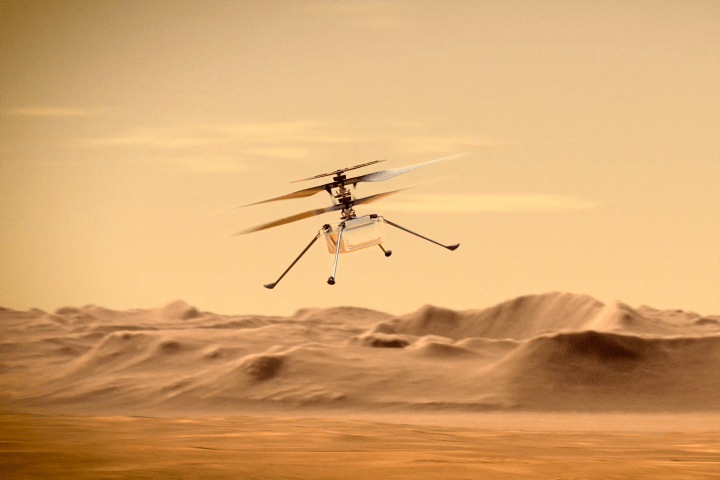NASA has announced that it recently lost contact with the Ingenuity helicopter on Mars for a week. Communications with the helicopter have now been restored, and it will continue exploring Mars’s Jezero crater along with the Perseverance rover.
The Ingenuity helicopter has outlasted all expectations, originally designed to make just five flights but completing an incredible 51st flight in April. However, this extended lifespan means that the helicopter has run into problems, particularly when the Martian winter set in and it was difficult for its solar panels to generate enough heat to keep its electronics warm. This means that the helicopter must deal with occasional brownouts of power during the nighttime, which can affect the time at which the helicopter wakes up each morning.

That’s why it wasn’t considered a big deal when the team at NASA’s Jet Propulsion Laboratory (JPL) couldn’t reach the helicopter one morning. “The team was not overly concerned when communication was lost with the helicopter on Sol 755,” Travis Brown, Chief Engineer for Ingenuity at JPL, wrote in a blog post, as they assumed that the helicopter was just late waking up due to power issues.
The radio silence persisted, but it still wasn’t a major concern. The Perseverance rover, which relays communications with the helicopter, had moved to a new area so it was thought that the problem might be due to geology around the rover hampering communications. But then the rover moved out of the communications shadow area, and the team still couldn’t reach the rover — at which point “the situation began to generate some unease,” Brown wrote.
The concerns were rising because even if there were some communications challenges, they should still have been able to get some signal through. “In more than 700 sols operating the helicopter on Mars, not once had we ever experienced a total radio blackout,” Brown wrote. “Even in the worst communications environments, we had always seen some indication of activity.”
Fortunately, within a week of the last check-in, a single radio acknowledgment signal came in. That indicated that the helicopter was alive, but was having problems communicating due to the area’s geography. There was another issue though, as the rover was now moving toward the helicopter — and the controllers of both vehicles have to be very careful to keep them at a distance from each other, as a collision could be devastating for them both. That’s particularly difficult in the narrow valleys in which the two are currently located.
In the end, a new flight plan was sent to the helicopter with the hope that it would wake up, perform pre-flight checks, and be able to take to the air despite the week’s problems. That flight worked as planned, covering around 1,000 feet in flight number 50, and the rover has been able to approach the area safely.
As good an outcome as this is, the Ingenuity team warns that this kind of issue may occur again in the future as the amount of dust on Ingenuity’s solar panels builds up and limits the power it can generate.
Editors’ Recommendations
Credit: Source link


Comments are closed.